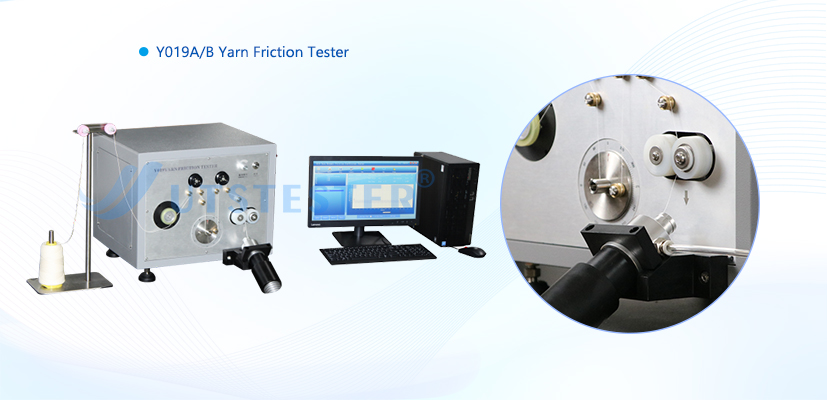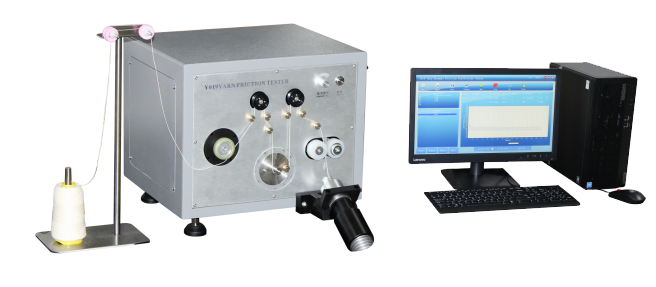 +86 152 6060 5085
+86 152 6060 5085
 +86 152 6060 5085
+86 152 6060 5085
Blog
Catalog
Yarn friction tester is the quality and performance of knitted fabrics depend on the characteristics of the knitted raw materials, the structure and specifications of the knitted fabrics, dyeing and finishing, and other factors. Among these, the performance of the knitted raw materials is the primary factor influencing the characteristics of knitted fabrics. Different types of knitted fabrics require different raw materials. Currently, most knitted fabrics used for underwear are made from cotton yarn; the raw materials for sock products include cotton yarn, wool, and chemical fibers. Wool sweaters are primarily made from wool, acrylic, acrylic blended yarn, etc. The main raw materials for knitted jackets are polyester, nylon, acrylic, blended yarn, and new textile materials (such as staple fibers, differentiated fibers, etc.); raw materials for special industries are primarily glass fiber, metal wires, and aromatic fibers. Raw material components can be pure yarn, which contains only one type of fiber, or blended yarn, which contains two or more types of fibers; (e.g., colored yarn, slub yarn, knotted yarn, core-spun yarn, etc.). Additionally, the emergence of new raw materials, such as special-shaped chemical fibers, composite fibers, and especially ultra-fine denier fibers, has opened up new methods for knitted yarn production.
During the process of forming knitted fabrics on a knitting machine, yarn is subjected to complex mechanical actions such as stretching, bending, twisting, and friction. To ensure normal production and product quality, knitting yarn must meet various requirements:
1. Yarn should have sufficient strength and extensibility
2. Yarn should have good softness
3. Yarn should have a certain degree of twist
4. The linear density of yarn should be uniform, and yarn defects should be minimal
5. The yarn should have good moisture absorption properties
6. The yarn should have a good finish and low friction coefficient
Knitting yarn should be free of impurities and oil stains and should be very smooth. Rough yarn can cause severe wear on parts, which are easily damaged. There are many flying sparks in the workshop, which not only affect workers' health but also impact the productivity of the knitting machine and the quality of the fabric.
Additionally, during the weaving process, yarn comes into friction contact with various mechanical components to impart a certain degree of resistance, thereby generating yarn tension. Therefore, when passing through ring machines, yarn with rough surfaces or coarse yarn will produce higher yarn tension, which will affect the uniformity of yarn tension and result in uneven loop structure. To reduce the yarn's friction coefficient, the yarn surface can be treated with anti-adhesive agents, lubricants, or wax.
When friction occurs as the yarn slides over other surfaces, tension is generated due to friction. In practical applications, the yarn passes through several sinkers and hooks. As the friction coefficient increases, yarn tension increases significantly. The increase in tension depends not only on the friction coefficient but also on the yarn guidance and the total wrapping angle when the yarn slides.
During textile processing, relative movement typically occurs between yarns, as well as between yarns and machine components, resulting in friction between yarns or between yarns and other materials. Sufficient friction between yarns is a necessary condition for good dimensional stability of the fabric; however, excessive friction can cause pounding during weaving and adversely affect fabric quality. The magnitude of the friction coefficient also directly influences the appearance and style of the fabric. For example, friction between yarns to some extent determines the fabric's interlacing resistance. If the interlacing resistance is too high, the fabric typically feels hard and rough, and distortion is likely to occur. Additionally, the friction force between yarns plays a decisive role in the fabric's shear deformation resistance, and the circular shape of the chest and back areas requires the fabric to have good shear deformation capability. Therefore, determining the yarn friction coefficient is of significant importance.

UTSTESTER's Y019A/B Yarn Friction Tester (ASTM D 3108) is used to measure the friction characteristics of yarns. This tester is suitable for determining the dynamic friction coefficient of chemical fiber filaments and other material yarns, and can also be used for textiles such as top rolls. The friction coefficient measurement of the device is an indispensable testing tool for evaluating the friction coefficient of filaments and textile equipment.

Email: hello@utstesters.com
Direct: + 86 152 6060 5085
Tel: +86-596-7686689
Web: www.utstesters.com